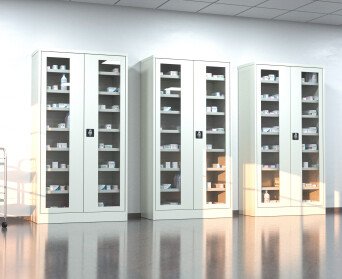-
Applications
-
Product Families
-
About Bruynzeel
-
Highlights
-default.jpg)
Healthcare high density mobile shelving
Healthcare high density mobile shelving systems is the ideal solution for medical facilities looking to maximise their storage capacity. These systems are designed to save space, using multiple racks with just one aisle.
Downloads
-default.jpg)
Lower your footprint
By using our Compactus® solutions, you can drastically reduce the size of your physical space by up to 75%. This also leads to more energy efficiency and lower CO₂ emissions for utility services like lighting, heating, cooling, and cleaning.
-default.jpg)
Maximise safety & security
The Compactus® Dynamic II is an ideal choice for storing medical supplies and equipment securely. This high density mobile shelving system is equipped with the most advanced safety and security features, such as Bruynzeel SafetyMaster & Bruynzeel ControlMaster, so you can rest assured that your items are safe and secure.
Contact
TALK TO AN EXPERT
Let us know your challenge or question and we'll be in touch shortly.
-default.jpg)
-grid-item-default.jpg)
